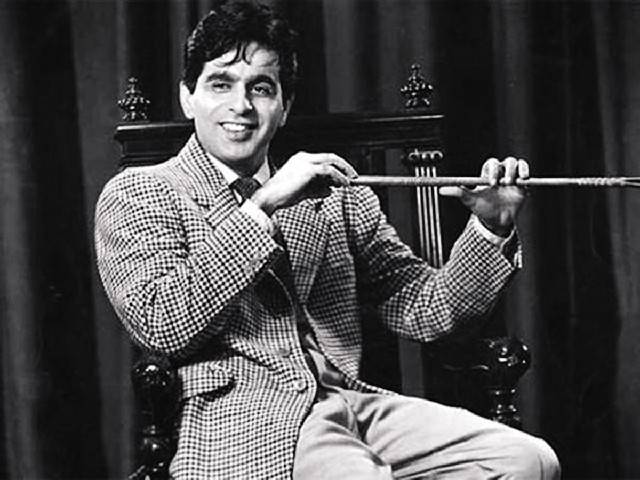
An actor is one who leads viewers to believe that he is true to a character etched by an author. It is here that we find a sea change between a stage actor and a film actor, for though mimesis is an ingrained impulse, endless retakes are not! It is in this sphere that Dilip Kumar, by way of illustration, adds to our knowledge: unless inspiration and application are co-starred, no magic shall result. Dilip Kumar passes on to the reader the advice given to him by Nitin Bose and Devika Rani. It was Nitin Bose who while directing him in Milan introduced him to the meta-reading of a script:
He made me write four to five pages expressing my feelings as Ramesh during the journey. (DK.p.148).
A startling instance of pedagogy, which inspires the confidence that neither was this exercise ever repeated nor was did it need to be repeated, since once a vista was opened, no further prompting was necessary.
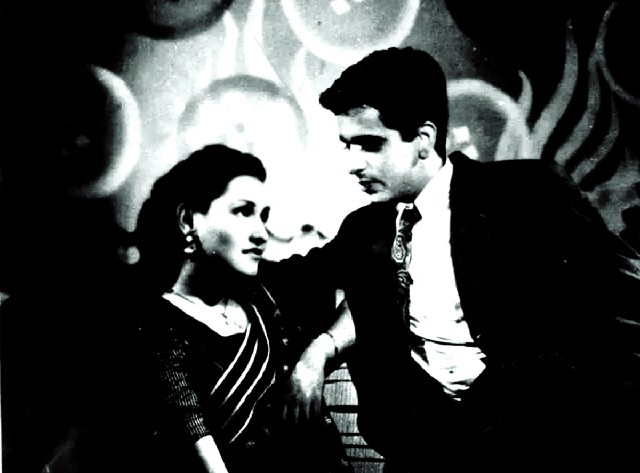
This is how Nitinda groomed me. He explained that a good script always helped an actor to perform effectively, but there were areas beyond what was given in the script that were waiting to be explored by one who wished to rise above the given areas in the performance. (DK p.148)
Though very imprecisely expressed, because the thin line between rising above and going beyond is not drawn, it passes the burden from the author to the actor, as it becomes incumbent on the actor to have a deeper understanding of the character than the author. It is on rendition that the imagination needs to be focused on. Is it here that structuralism entered the performing arts? This advice was fine-tuned by Devika Rani who told Dilip Kumar:
She pointed out to me that a director may be satisfied with the shot that an actor had given, but it is for the actor to discern for himself whether he had really given of his best. The actor, she told me, was within his rights to request for another take if he felt he could do better. (DK p.148)
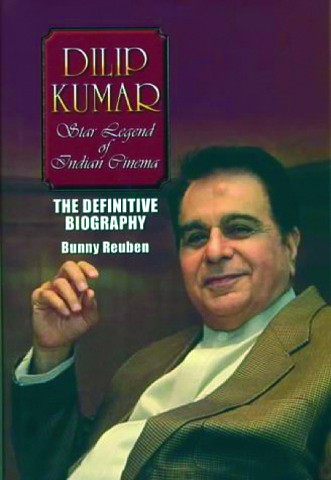
The level of competence is the verbal equivalent of filling five pages of an exercise book, but her advice was empirical since the parameters of a performance are more tangible; and it is within such parameters that we need to determine the equation between the hero and heroine. Cine-goers are consciously or unconsciously match makers, and if some of them think that Madhubala was a better match than the heroine of Dilip Kumar’s life, who can prevent them? However the heroine has to be in sync more with a script than with a hero.
Another aspect that surfaces is that a heroine is more in her element in the epic mode than in the lyric mode. Superficially, I may be giving the opposite example, but histrionically Madhubala’s performance in Amar (1954) is better than in Mughal-i-Azam (1960). Even in the lyric mode the uninhibited love scenes with Madhubala in Tarana (1951) are equaled by the uninhibited love scenes with Nargis in Hulchul (1951), and although both films were released in the same year, the censor’s knife was applied more to Hulchul. Meena Kumari was another magnetic heroine, but most of her roles with Dilip Kumar were light and romantic. It was only in Footpath (1953) that she could blend with the squalour, to the extent that her bathing scene is anything but enticing. As far as Kamini Kaushal is concerned:
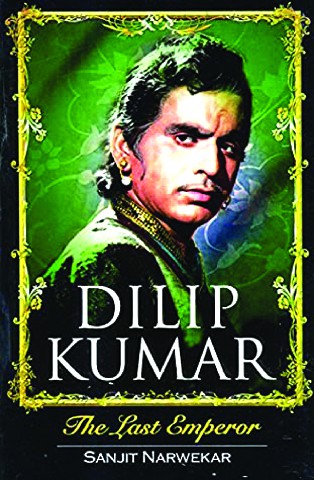
“A question that I have often been asked is the somewhat intrusive one, whether it makes a difference to the potency of emotions from within oneself if the actors are emotionally involved in their real lives. My honest answer is both yes and no.” (p.DK.143)
The real benchmark to judge Dilip Kumar’s heroines is to imagine whether they were replaceable. Kamini Kaushal was not. In Arzoo (1950) when she reclines on the luxurious bed of the landlord, Dilip Kumar chides her for taking such a liberty. There is no tendresse but both bring realism here to its top pitch. It was the same with Nargis. It was not in Hulchul but in Jogan (1950) that she posed a veritable histrionic challenge to Dilip Kumar, and where the defining sentiment between them was tension.
Similarly, run through the roster of Dilip Kumar’s villains: K.N. Singh. Pran, Premnath, and Amresh Puri. The most formidable in terms of performance was Ram Singh in Shaheed (1948), overshadowing even Chandra Mohun in the film; yet, he finds no mention in the book. Could Dilip Kumar have nursed a grievance against him in real life? He made a contribution to Dilip Kumar’s epic performance in Shaheed, and should not have been sidelined in any history of Bollywood.
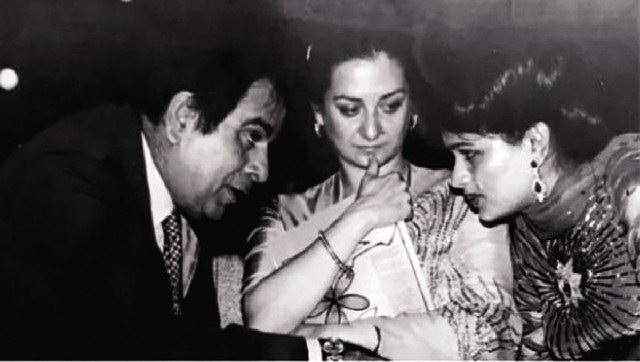
Not that the reader of every generation would expect a reference to Ram Singh, as the focus keeps on changing, here it is the responsibility of the hero to carry the villain with him, as he has done with Pran throughout. What every reader would expect of Dilip Kumar, an actor of unique stature is the secret of his success. It is not only, as we mentioned earlier, that Dilip Kumar is registered as exceedingly handsome. No doubt this contributes greatly to his persona but this is not his magic formula, otherwise he would not need retakes. Again, Nasir Khan with his close resemblance and considerable talent would have swept Dev Anand and Raj Kapur off the board, but this did not happen. He was not able to choose his roles with care, a pitfall Dilip Kumar avoided. I do not agree with those critics who say that Dilip Kumar should not have passed over the roles he was offered in Mother India (1955) or Pyasa (1957). His persona would be incompatible to these roles.
Dilip Kumar does not, of course, share the secret of his success, but he does share the answers he himself received, in three installments, and all from Ashok Kumar:
1) “It’s very simple. You just do what you would do in the situation if you were really in it. If you act, it will be acting and it will look very silly.” (DK.p.117)
2) “Ashok Bhaiyya had hit upon the secret of ‘non’-acting’, but he had a definite calculation in his mind, and the arithmetic of that calculation was entirely his. I began to understand that I would have to arrive at my own approach to the whole business of simulating feelings and emotions.” (DK.p.149)
3) “Being a Bombay Talkies man, Ashok Bhaiyya had as much of a fetish for rehearsals as I had, so we already had almost eight to ten rehearsals. The director told me to be ready for the take, and he called for action. When I spoke my dialogue, quite inadvertently, I replaced the word mulayam with narm (also meaning soft) and Ashok Bhaiyya was thrown of track. I don’t know what went wrong with me that day. The director called: CUT; and I need not tell you what followed. Though, not one to lose his temper, Ashok Bhaiyya gave me a piece of his mind.” (.DK.p.149)
This is the essence of Dilip Kumar’s calling and the quintessence of his autobiography. The application can be computed, the inspiration cannot. It is by being immersed in a character that an actor can replace a word with its synonym, but then acting means interacting.
If we wish to uncover the indwelling element of Indian cinema, we shall find that the dramatic interest is created by the intensity of feelings rather than the inventiveness of the author; and nowhere is this trait more apparent than in the recurrent theme of Devdas (1935, 1955 and 2002) It is precisely because Devdas had a preceding and succeeding version that it has become a touchstone of success. K.L.Saigal was hampered by crude dialogue, Shahrukh Khan, though he plays a more reckless Devdas, was handicapped by the surrounding glamour. The producer could not be persuaded that black and white was not a constraint, but a medium. Regardless of the comparison, considered on its own, Dilip Kumar gave a sterling performance in Devdas. It is symptomatic that none of the versions could cope with the very last sentence written by Sarat Chandra Chatterjee.
What happened on the 7th of July 2021 was inevitable. Dilip Kumar came so close to a century and we conceived of another theatrical climax, disregarding how old and frail he had become. His funeral had been rehearsed in Shaheed 1948, and then, his bier was accompanied by Raja Mehdi Ali Khan’s immortal revolutionary anthem. In his last funeral, he was draped in the national flag of the country to which he gave his talent and his loyalty.
Long lives also mean a wide spectrum of awareness. Among the Urdu poets Dilip Kumar had loved, Mir Taqi Mir and Nazeer Akbarabadi had an almost equal span of life, In the very rare case in which real life had the greater dramatic appeal, Saira Bono has given a matching performance. It was providential that Dilip Kumar married a younger heroine as Saira Bano was responsible for making his last bouts of illness bearable. Having rehearsed his death a number of times, Dilip Kumar could not have been oblivious to the lights being gradually dimmed. At such a time, a bright, loving, caring companion becomes one’s most precious asset.
It was a fade out, but the co-stars, many of them celebrities themselves, stayed back to give Dilip Kumar a tearful but standing ovation.
Note:
Dilip Kumar’s autobiography The Substance and the Shadow was published in 2014. Bunny Reuben’s Dilip Kumar was published in 2004. The same year saw the publication of Sanjit Narwekar’s Dilip Kumar: The Last Emperor
The author is the Editor of the Journal of the Pakistan Historical Society. He has written among other books A Concise History of Pakistan Oxford, 2009, and Pakistan Studies Oxford, 2007
He made me write four to five pages expressing my feelings as Ramesh during the journey. (DK.p.148).
A startling instance of pedagogy, which inspires the confidence that neither was this exercise ever repeated nor was did it need to be repeated, since once a vista was opened, no further prompting was necessary.

This is how Nitinda groomed me. He explained that a good script always helped an actor to perform effectively, but there were areas beyond what was given in the script that were waiting to be explored by one who wished to rise above the given areas in the performance. (DK p.148)
Though very imprecisely expressed, because the thin line between rising above and going beyond is not drawn, it passes the burden from the author to the actor, as it becomes incumbent on the actor to have a deeper understanding of the character than the author. It is on rendition that the imagination needs to be focused on. Is it here that structuralism entered the performing arts? This advice was fine-tuned by Devika Rani who told Dilip Kumar:
She pointed out to me that a director may be satisfied with the shot that an actor had given, but it is for the actor to discern for himself whether he had really given of his best. The actor, she told me, was within his rights to request for another take if he felt he could do better. (DK p.148)

The level of competence is the verbal equivalent of filling five pages of an exercise book, but her advice was empirical since the parameters of a performance are more tangible; and it is within such parameters that we need to determine the equation between the hero and heroine. Cine-goers are consciously or unconsciously match makers, and if some of them think that Madhubala was a better match than the heroine of Dilip Kumar’s life, who can prevent them? However the heroine has to be in sync more with a script than with a hero.
The real benchmark to judge Dilip Kumar’s heroines is to imagine whether they were replaceable. Kamini Kaushal was not
Another aspect that surfaces is that a heroine is more in her element in the epic mode than in the lyric mode. Superficially, I may be giving the opposite example, but histrionically Madhubala’s performance in Amar (1954) is better than in Mughal-i-Azam (1960). Even in the lyric mode the uninhibited love scenes with Madhubala in Tarana (1951) are equaled by the uninhibited love scenes with Nargis in Hulchul (1951), and although both films were released in the same year, the censor’s knife was applied more to Hulchul. Meena Kumari was another magnetic heroine, but most of her roles with Dilip Kumar were light and romantic. It was only in Footpath (1953) that she could blend with the squalour, to the extent that her bathing scene is anything but enticing. As far as Kamini Kaushal is concerned:

“A question that I have often been asked is the somewhat intrusive one, whether it makes a difference to the potency of emotions from within oneself if the actors are emotionally involved in their real lives. My honest answer is both yes and no.” (p.DK.143)
The real benchmark to judge Dilip Kumar’s heroines is to imagine whether they were replaceable. Kamini Kaushal was not. In Arzoo (1950) when she reclines on the luxurious bed of the landlord, Dilip Kumar chides her for taking such a liberty. There is no tendresse but both bring realism here to its top pitch. It was the same with Nargis. It was not in Hulchul but in Jogan (1950) that she posed a veritable histrionic challenge to Dilip Kumar, and where the defining sentiment between them was tension.
Similarly, run through the roster of Dilip Kumar’s villains: K.N. Singh. Pran, Premnath, and Amresh Puri. The most formidable in terms of performance was Ram Singh in Shaheed (1948), overshadowing even Chandra Mohun in the film; yet, he finds no mention in the book. Could Dilip Kumar have nursed a grievance against him in real life? He made a contribution to Dilip Kumar’s epic performance in Shaheed, and should not have been sidelined in any history of Bollywood.

Not that the reader of every generation would expect a reference to Ram Singh, as the focus keeps on changing, here it is the responsibility of the hero to carry the villain with him, as he has done with Pran throughout. What every reader would expect of Dilip Kumar, an actor of unique stature is the secret of his success. It is not only, as we mentioned earlier, that Dilip Kumar is registered as exceedingly handsome. No doubt this contributes greatly to his persona but this is not his magic formula, otherwise he would not need retakes. Again, Nasir Khan with his close resemblance and considerable talent would have swept Dev Anand and Raj Kapur off the board, but this did not happen. He was not able to choose his roles with care, a pitfall Dilip Kumar avoided. I do not agree with those critics who say that Dilip Kumar should not have passed over the roles he was offered in Mother India (1955) or Pyasa (1957). His persona would be incompatible to these roles.
Dilip Kumar does not, of course, share the secret of his success, but he does share the answers he himself received, in three installments, and all from Ashok Kumar:
1) “It’s very simple. You just do what you would do in the situation if you were really in it. If you act, it will be acting and it will look very silly.” (DK.p.117)
2) “Ashok Bhaiyya had hit upon the secret of ‘non’-acting’, but he had a definite calculation in his mind, and the arithmetic of that calculation was entirely his. I began to understand that I would have to arrive at my own approach to the whole business of simulating feelings and emotions.” (DK.p.149)
3) “Being a Bombay Talkies man, Ashok Bhaiyya had as much of a fetish for rehearsals as I had, so we already had almost eight to ten rehearsals. The director told me to be ready for the take, and he called for action. When I spoke my dialogue, quite inadvertently, I replaced the word mulayam with narm (also meaning soft) and Ashok Bhaiyya was thrown of track. I don’t know what went wrong with me that day. The director called: CUT; and I need not tell you what followed. Though, not one to lose his temper, Ashok Bhaiyya gave me a piece of his mind.” (.DK.p.149)
This is the essence of Dilip Kumar’s calling and the quintessence of his autobiography. The application can be computed, the inspiration cannot. It is by being immersed in a character that an actor can replace a word with its synonym, but then acting means interacting.
This is the essence of
Dilip Kumar’s calling and the quintessence
of his autobiography. The application can be computed, the inspiration cannot
If we wish to uncover the indwelling element of Indian cinema, we shall find that the dramatic interest is created by the intensity of feelings rather than the inventiveness of the author; and nowhere is this trait more apparent than in the recurrent theme of Devdas (1935, 1955 and 2002) It is precisely because Devdas had a preceding and succeeding version that it has become a touchstone of success. K.L.Saigal was hampered by crude dialogue, Shahrukh Khan, though he plays a more reckless Devdas, was handicapped by the surrounding glamour. The producer could not be persuaded that black and white was not a constraint, but a medium. Regardless of the comparison, considered on its own, Dilip Kumar gave a sterling performance in Devdas. It is symptomatic that none of the versions could cope with the very last sentence written by Sarat Chandra Chatterjee.
What happened on the 7th of July 2021 was inevitable. Dilip Kumar came so close to a century and we conceived of another theatrical climax, disregarding how old and frail he had become. His funeral had been rehearsed in Shaheed 1948, and then, his bier was accompanied by Raja Mehdi Ali Khan’s immortal revolutionary anthem. In his last funeral, he was draped in the national flag of the country to which he gave his talent and his loyalty.
Long lives also mean a wide spectrum of awareness. Among the Urdu poets Dilip Kumar had loved, Mir Taqi Mir and Nazeer Akbarabadi had an almost equal span of life, In the very rare case in which real life had the greater dramatic appeal, Saira Bono has given a matching performance. It was providential that Dilip Kumar married a younger heroine as Saira Bano was responsible for making his last bouts of illness bearable. Having rehearsed his death a number of times, Dilip Kumar could not have been oblivious to the lights being gradually dimmed. At such a time, a bright, loving, caring companion becomes one’s most precious asset.
It was a fade out, but the co-stars, many of them celebrities themselves, stayed back to give Dilip Kumar a tearful but standing ovation.
Note:
Dilip Kumar’s autobiography The Substance and the Shadow was published in 2014. Bunny Reuben’s Dilip Kumar was published in 2004. The same year saw the publication of Sanjit Narwekar’s Dilip Kumar: The Last Emperor
The author is the Editor of the Journal of the Pakistan Historical Society. He has written among other books A Concise History of Pakistan Oxford, 2009, and Pakistan Studies Oxford, 2007

